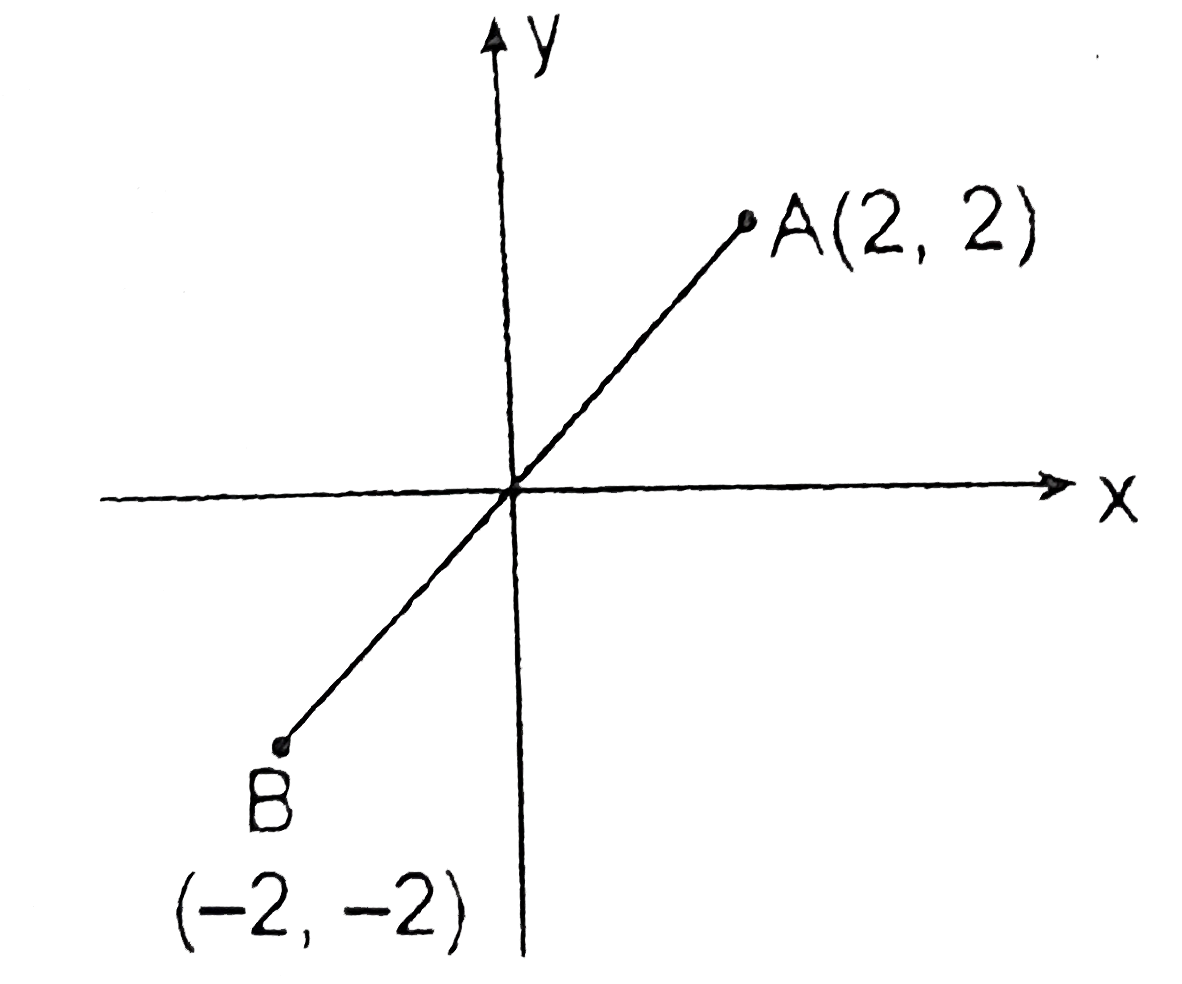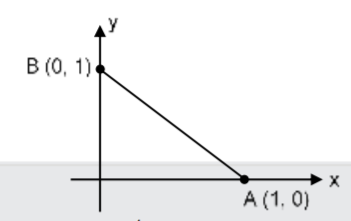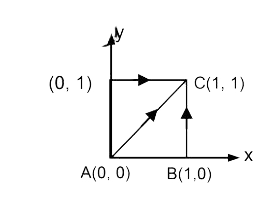A particle of mass m=2kg executes SHM in xy- plane between point A and B under action of force →F=Fxˆi+Fyˆj. Minimum time taken by particle to move from A to B is 1 sec. At t=0 the particle is at x=2 and y=2. Then Fx as function of time t is

−4π2sinπt
−4π2cosπt
4π2cosπt
None of these
The correct Answer is:B
Step by step video, text & image solution for A particle of mass m = 2kg executes SHM in xy- plane between point A and B under action of force vecF = F_(x)hati+F_(y)hatj. Minimum time taken by particle to move from A to B is 1 sec. At t = 0 the particle is at x = 2 and y = 2. Then F_(x) as function of time t is by Physics experts to help you in doubts & scoring excellent marks in Class 11 exams.
Topper's Solved these Questions
- BOOK - CENGAGE PHYSICSCHAPTER - LINEAR AND ANGULAR SIMPLE HARMONIC MOTIONEXERCISE - Multiple Correct Answer Type9videos
LINEAR AND ANGULAR SIMPLE HARMONIC MOTION
- BOOK - CENGAGE PHYSICSCHAPTER - LINEAR AND ANGULAR SIMPLE HARMONIC MOTIONEXERCISE - Single correct anwer type14videos
LINEAR AND ANGULAR SIMPLE HARMONIC MOTION
- BOOK - CENGAGE PHYSICSCHAPTER - KINETIC THEORY OF GASES AND FIRST LAW OF THERMODYNAMICSEXERCISE - Interger11videos
KINETIC THEORY OF GASES AND FIRST LAW OF THERMODYNAMICS
- BOOK - CENGAGE PHYSICSCHAPTER - MISCELLANEOUS KINEMATICSEXERCISE - Interger type3videos
MISCELLANEOUS KINEMATICS
Similar Questions
A particle of mass 2 kg starts motion at time t = 0 under the action of variable force F = 4t (where F is in N and t is in s). The work done by this force in first two
View Solution(i) A particle of mass m executes SHM in xy- plane along a straight line AB. The points A (a, a) and B (- a, - a) are the two extreme positions of the particle. The particle takes time T to move from one extreme A to the other extreme B. Find the x component of the force acting on the particle as a function of time if at t = 0 the particle is at A. (ii) Two particle A and B are performing SHM along X-axis and Y-axis respectively with equal amplitude and frequency of 2 cm and 1 Hz respectively. Equilibrium positions for the particles A and B are at the coordinate (3, 0) and (0, 4) respectively. At t = 0, B is at its equilibrium position and moving toward the origin, while A is nearest to the origin. Find the maximum and minimum distances between A and B during their course of motion
View Solution
Knowledge Check
- Question 1 - Select One
A particle of mass 2kg moves in the xy plane under the action of a constant force →F where →F=ˆi−ˆj. Initially the velocity of the particle is 2ˆj. The velocity of the particle at time t is
A12(t+4)ˆi−12tˆjBt(ˆi−ˆj)C12t(ˆi−ˆj)D12tˆi+12(t+4)ˆj - Question 2 - Select One
Particle moves from point A to point B along the line shown in figure under the action of force. evcF=−xˆi+yˆj. Determine the work done on the particle by →F in moving the particle from point A to point B.
 A1 JB1/2 JC2 JD3 J
A1 JB1/2 JC2 JD3 J - Question 3 - Select One
A particle of mass m moves from A to C under the action of force →F=2xyˆi+y2ˆj , along different paths as shown in figure.
 AForce is conservative in natureBWork done by force is 13 when particle moves along path ABCCForce is non conservative in nature and work done along path AC is 1 JDWork done along path ADC is 145J
AForce is conservative in natureBWork done by force is 13 when particle moves along path ABCCForce is non conservative in nature and work done along path AC is 1 JDWork done along path ADC is 145J
A particle is moving in X-Y plane that x=2t and y=5sin(2t). Then maximum speed of particle is:
View SolutionA particle moves in the x-y plane under the action of a force →F such that the value of its linear momentum →P at any time t is Px=2 cost and py=2sint. What is the angle θ between →F and P at a given time t?
View SolutionA particle of mass m is subjected to a force →F=F0[cos(t)ˆi+sin(1)ˆj]. If initially (t=0) the particle was at rest, the kinetic energy of the particle as a function of time is given by:
View SolutionA particle of mass 2 kg starts motion at time t = 0 under the action of variable force F = 4t (where F is in N and t is in s). The work done by this force in first two second is
View SolutionA body of mass 5 kg under the action of constant force →F=Fxˆi+Fyˆj has velocity at t=0 s as →v=(6ˆi−2ˆj) m/s and at t=10s as →v=+6ˆj m/s. The force →F is:
View Solution

